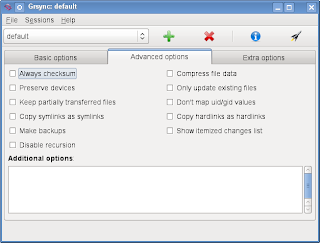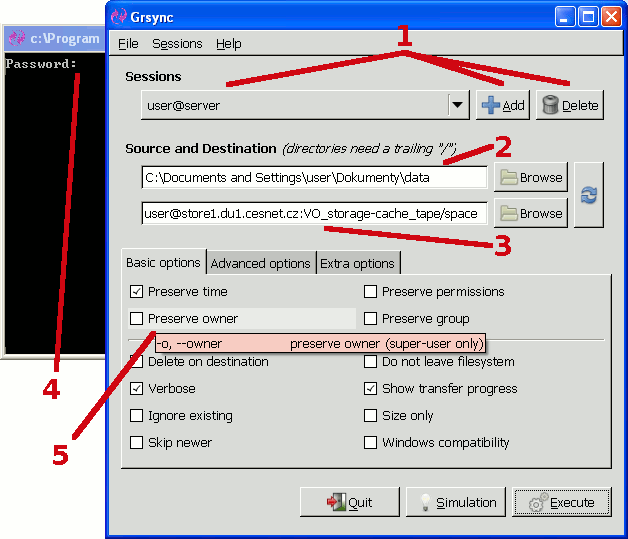

#Grsync export as rsync script mac os
Grsync is available on fair number of Linux flavors (like Ubuntu), Windows and Mac OS X. It can be effectively used to synchronize local directories and it supports remote targets as well (even though it doesn’t support browsing the remote folder). In a nutshell, Grsync allows you to synchronize folders, files and make backups, while utilizing the power of the tried and tested rsync in the background to do the actual heavy lifting. So enter a great little alternative called Grsync, which is basically a graphic user interface for rsync! Linux users will be familiar with the powerful rsync command line file and directory synchronization tool, but if you are an Ubuntu user then chances are you’re not particularly keen on messing about on the command line. Back up to another internal drive, back up to a flash disk, back up to an external drive, or back up to an remote source, it doesn’t really matter as long as you make the effort to backup on a regular basis. If you have any recommendations I could make to improve the script, then let me know!Ĭopyright © 2020-2022 All Rights Reserved.Making backups of important folders should become a routine for everyone, simple as that.

This isn’t intended as a backup tool, but just a point-and-click utility for copying files to a remote server from your file manager. You should bare in mind that shell scripts like this can be finicky and can flake out when you might need it most. I’ve included some comments in the top of the script that could be tweaked. You can modify the script more to your liking if it doesn’t exactly meet your needs.

You can use your mouse or keyboard arrows to select your preferred destination(s). If you have XTerm installed, the rsync_util script visible to $PATH, a complete configuration file, and the execute permission bit applied to the script file, then you should see an XTerm window with an Ncurses interface spawn. For myself, I’ve enabled the action for all file types.Īt this point, you should be able to right click any file and select your custom action.
#Grsync export as rsync script download
Simply laso them files, right click, then click “Rsync To” and they’re off!įirst off you’re going to want to download the shell script file. It isn’t comparable to the dedicated rsync GUI clients and I sure as heck wouldn’t trust it as part of my backup methodology, but it’s nice to have for a quick and simple means of copying a selection of files to a specified destination(s) from a point-and-click point of view. Thanks to Thunar and its “Custom Actions” feature and a little shell scripting, I’ve setup my own client of sorts.

There are some graphical utilities out there that could alleviate this, such as Grsync and Unison but wouldn’t it be nice to just have the ability of doing this directly from your file manager? I think so. Setting up my custom Ncurses Rsync client for the Thunar file managerĪs someone that rsync’s files to-and-fro on a near daily basis, it quickly became a tedious practice, especially when multiple files and directories are involved. Setting up my custom Ncurses Rsync client for the Thunar file manager.


 0 kommentar(er)
0 kommentar(er)
